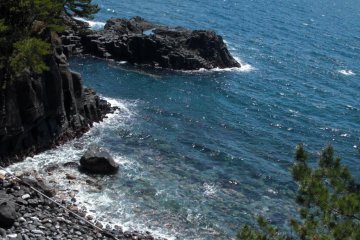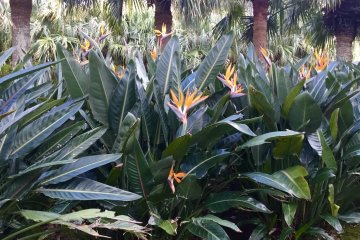Fuji-Hakone Izu National Park is a vast area with many different landscapes scattered throughout Tokyo, Shizuoka, Kanagawa, and Yamanashi Prefectures. The park’s most southerly location is sub-tropical Hachijojima in the Izu Islands chain located 300 kilometers south of Tokyo, and accessible by plane and overnight ferry.
Hachijojima, secluded from the Honshu mainland, has not only developed a unique culture and language, but also preserved great biodiversity. At the foot of Hachijo Fuji, the highest peak in the Izu Islands chain, is Hachijo Botanical Park where visitors can learn about the natural bounty of the island.
When you imagine a national park, remote and vast areas might come to mind. However, The Hachijo Botanical Park is easily accessible, within a 10 minute drive of the island’s airport. The park also reveals the intersection of the islan'ds environment and the traditional culture, with the Hachijo Visitors Center at the entrance to the park. Above the entrance is the greeting Ojariyare. This is the Hachijo dialect’s version of Irasshaimase, or welcome. Here, you can pick up maps of the park and town, learn about cultural sites and events, and receive an orientation to the rich ecology of the island.
Some things to look for at the visitors center are the whale spotting board and guided tours. Residents and visitors reports of whale sightings are updated daily, so you can get an idea of where to go see them. If you time your visit for a weekend, you can join a variety of walking tours. These free tours provide a local insight into the botanical treasures in the garden itself. For a nominal fee, guides will take visitors on a walk through the town, providing a window into the folk culture.
Beyond the visitors center is the nearly 50 acre park with different zones. The greenhouse has over 100 species of plants, including hibiscus and bougainvillea flowers, and papaya, mango, and palm trees. A short stroll on the garden path takes you to a primeval forest of towering hego ferns, plantings of birds of paradise flowers, and a habitat for muntjac deer.
The garden is open year round and admission is free.











